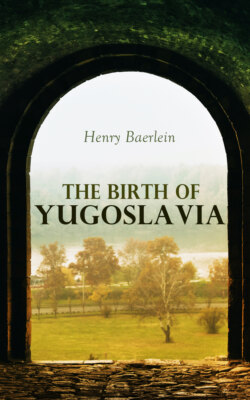Читать книгу The Birth of Yugoslavia - Henry Baerlein - Страница 19
На сайте Литреса книга снята с продажи.
A GALLANT REPUBLIC
ОглавлениеThe most renowned, as it is the most beautiful, of Dalmatian towns, Dubrovnik (Ragusa), was always more preoccupied with commerce and letters than with warfare. It managed to maintain itself in glory for a very long time, thanks to the astuteness of the citizens, who were ever willing to give handsome tribute to a potential foe. On occasion the Ragusans could be nobly firm, refusing to deliver a political refugee to the Turks, and so forth. In such tempestuous times the little State was forced to trim its sails; there was the gibe that they were prepared to pay lip service to anyone, and that the letters S.B. on the flag (for Sanctus Blasius, their patron saint) indicated the seven flags, sette bandiere, which they were ready to fly. But the Republic of Dubrovnik—a truly oligarchic republic, until the great earthquake of 1667 made it necessary to raise a few other families into the governing class—the republic can say, with truth, that when darkness was over the other Yugoslavs it kept a lamp alight. As yet the Serbian State was rising in prosperity and Dubrovnik made a treaty of commerce with Stephen (1196–1224), who had succeeded his father Nemania. During this reign St. Sava, the king's brother, came back to Serbia and organized the national Church, founding also numerous monasteries and churches, as well as schools. Of the successors of Stephen we may mention Uroš, whose widow, a French princess, Helen of Anjou, is venerated in Serbia for her good deeds and has been canonized. King Milutine (1281–1321) made Serbia the most united and the leading State in Eastern Europe; under Dušan, who has been called the Serbian Charlemagne, success followed success, and under his sceptre he gathered most of the Serbian people, as well as many Greeks and Albanians. He had the idea—and it was not beyond his strength—to group together all the Serbian provinces.
